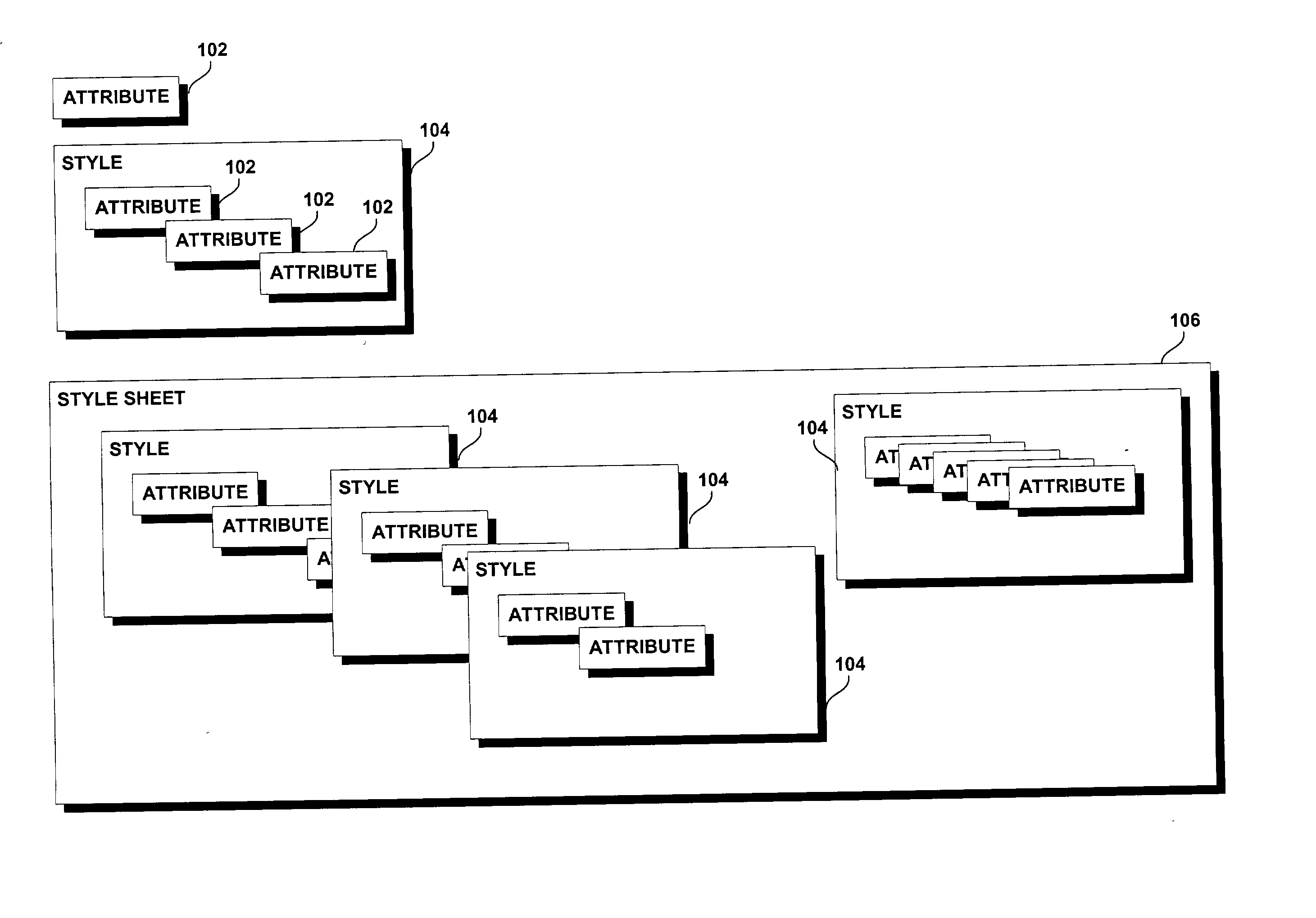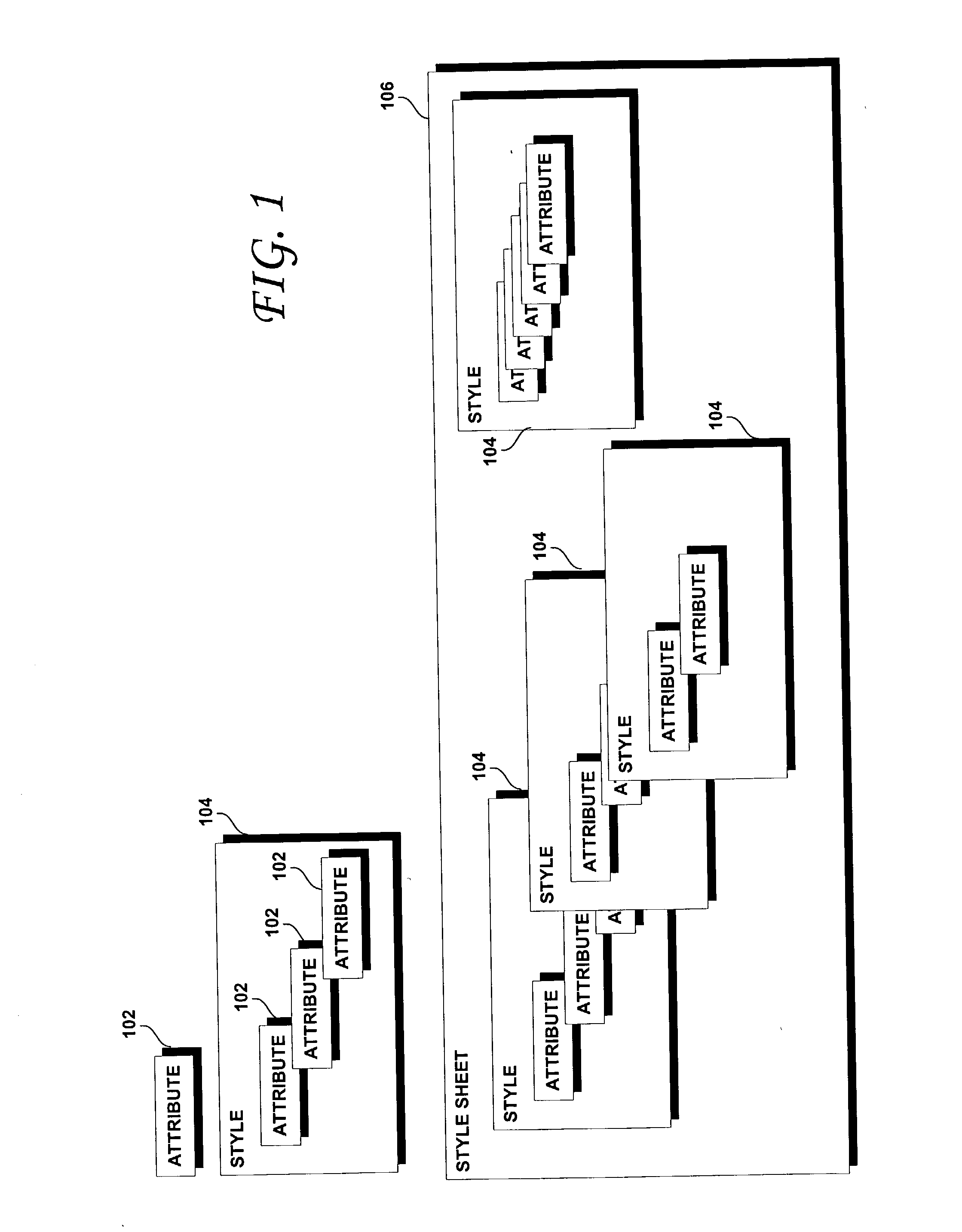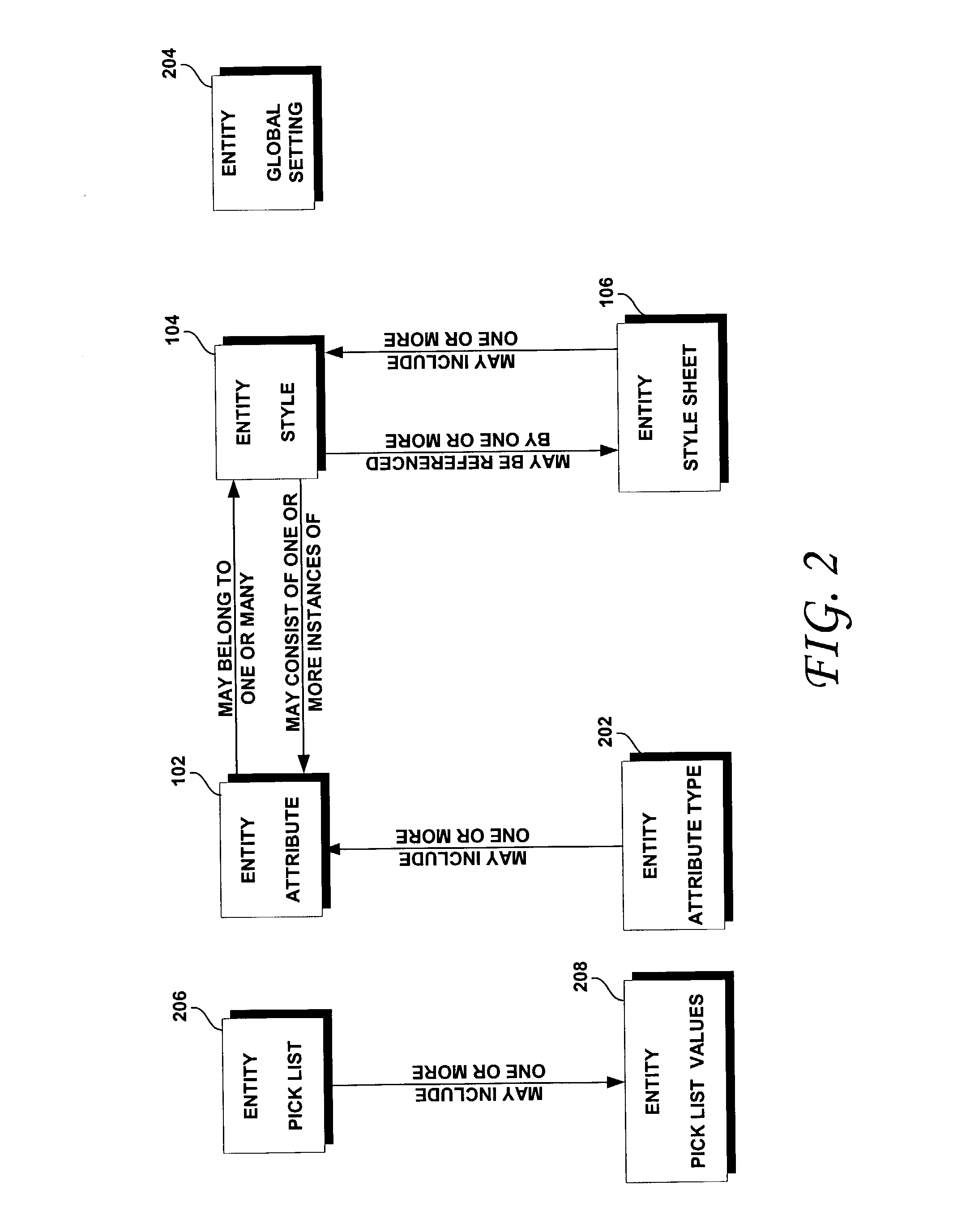Methods and systems for managing styles electronic documents
a style and electronic document technology, applied in the field of methods and systems for managing styles and style sheets, can solve the problems of affecting the release of new versions, requiring a great deal of effort to implement stylistic changes, and becoming more and more difficult to create web sites where the content of html documents is difficult to find,
- Summary
- Abstract
- Description
- Claims
- Application Information
AI Technical Summary
Benefits of technology
Problems solved by technology
Method used
Image
Examples
Embodiment Construction
[0026] Functional Description
[0027] FIG. 1 shows attributes, styles and style sheets, as utilized by the present invention. According to the present invention, an attribute 102 is a visible, content-independent property of an element of the electronic document. For example, attributes may include color, a font family, height, text style and the like. Attributes 102 are the building blocks of styles, as shown at 104. That is, a style 104 is a group of attributes 102 that is identified by a single name. For example, a style 104 may include attributes defining the font (e.g., Arial), a font size (e.g., 12 pt.), a font style (e.g., normal), a font weight (e.g., normal) and a color (e.g., #000000). Such an exemplary style 104 may control the formatting of a text block, for example, within an electronic document. A style sheet 106, according to the present invent, may define the appearance of one or more electronic documents, such as World Wide Web (hereafter, "Web") pages, for example. A...
PUM
 Login to View More
Login to View More Abstract
Description
Claims
Application Information
 Login to View More
Login to View More - R&D
- Intellectual Property
- Life Sciences
- Materials
- Tech Scout
- Unparalleled Data Quality
- Higher Quality Content
- 60% Fewer Hallucinations
Browse by: Latest US Patents, China's latest patents, Technical Efficacy Thesaurus, Application Domain, Technology Topic, Popular Technical Reports.
© 2025 PatSnap. All rights reserved.Legal|Privacy policy|Modern Slavery Act Transparency Statement|Sitemap|About US| Contact US: help@patsnap.com



